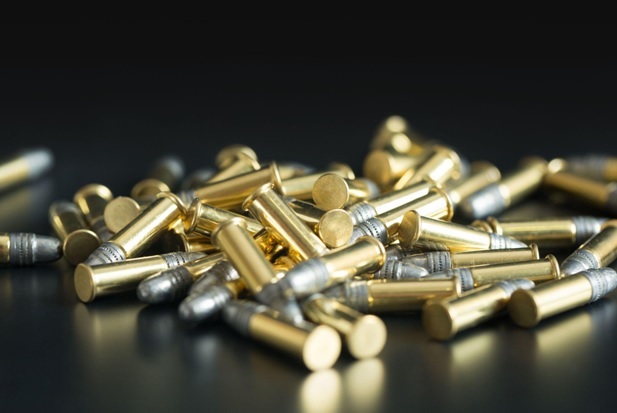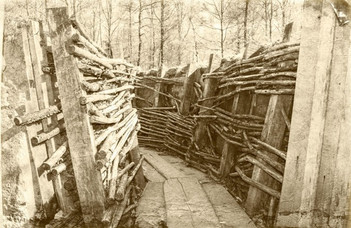10 Interesting M1903 Facts
Jan 13th 2025
The M1903 Springfield is not just one of the most famous rifles that’s been carried by American servicemen. Like the Garand and the Enfield, it is one of the most famous rifle platforms of all time.
But did you know these 10 interesting facts about Springfield M1903 rifles? Test your knowledge against them.
1. The first major conflict in which the 1903 saw service was not the First World War
Everyone knows the M1903 as the “doughboy’s rifle” (even though more Americans in the First World War carried Enfields than carried Springfields), but the First World War was not the first conflict in which the platform saw use.
That would be the Philippine-American War, which took place between 1899 and 1902, immediately following the conclusion of the Spanish-American War, which actually provides the story behind the rise of the M1903.
2. The 1903 is roughly based on the design of the Mauser 1893
The Americans may have triumphed over the Spanish in the Spanish-American War, but it was a hard-won conflict, and at times, Americans were proven to be outgunned.
Take, for instance, the Battle of San Juan Hill in Cuba, in which fewer than 1000 Spaniards repulsed an American force more than 15 times their size.
Part of the secret (notwithstanding the superior Spanish military position) was the rifle: Spaniards were equipped with Mauser 1893 rifles. Americans carried repeating Springfield 1892-99 rifles (AKA Springfield Krag-Jorgensen rifles), or worse - single shot Springfield 1873 rifles.
The Mausers of the Spanish were easier to load, accurate, powerful, and provided a faster rate of fire. Captured Mauser 1893 rifles provided the basis for improvements to bolt-action design that yielded the Springfield M1903.
3. The 1903’s first chambering was not .30-06
Everyone knows the cartridge around which the M1903 was built. It’s the .30-06 Springfield, same as the M1 Garand’s.
Except it isn’t. Yes, the vast majority of M1903 rifles ended up with this chambering, but when the rifle was developed, it was built around the .30-03 Springfield, an older cartridge that was loaded with a round nosed bullet.
Round nosed bullets don’t offer nearly the same accuracy or trajectory as Spitzer bullets, so the change over to .30-06 was made after just a few years.
4. Some 1903 rifles are considered unsafe to fire
Early in the production of the rifle, some of the M1903 rifles were built with receivers that had been given a single (and inadequate) heat treatment that resulted in brittleness that could not withstand the stresses of firing. For more information on these “low-number” M1903 rifles, the affected Springfield parts, and more, see our previous article on the subject.
5. A 1903 variant was once the Army’s main choice in a sniper rifle platform
Through the Second World War, one of the U.S. Army’s main sniper rifle platforms was the M1903A4, a variant on the M1903A3. The two platforms were effectively the same; the only real difference was that there was additional room on the receiver for a Redfield scope mount.
6. The M1903 was in official service for more than half a century
While it might not get as much press time as the Garand, or as the M1911, the M1903 was in official service, in some capacity or other, for more than 50 years, between 1903 and the 1970s. It was the standard battle rifle from 1903 to 1936, after which point it was replaced by the M1 Garand, but it remained in service as a sniper rifle until the 70s. The funny thing is, even though the Garand might be a more famous rifle, the M1903 was in service far longer. The Garand had only a short stint until it was replaced by the M14.
7. During the Second World War, a special process was developed to speed up the production of barrels
American arms manufacturers might not be proud to admit this now, but during World War Two, in order to speed up production, barrels with two-groove rifling were produced. Worse yet, steel alloy requirements were relaxed in order to meet emergency demands. Just how badly this affected quality may not ever be known, but we won the war, so, there’s that.
8. A rimfire variant was produced for training purposes

If you’re lucky, you might at some point come across a Springfield M1922, a .22 caliber rimfire variant of the M1903 designed for cadet training purposes. They just so happen to be excellent rifles, and can be sporterized and used for a variety of different disciplines from target shooting to competition and of course, small game hunting.
Another rimfire variant was produced, called the M2. Keep your eyes open at gun shops and maybe one day you’ll find one.
9. The earliest Springfield M1903 rifles were equipped with rod bayonets
This is actually quite an interesting story. You might be familiar with the M1905 sword bayonet which is iconic with its pairing with the M1903, but that actually wasn’t the first bayonet designed for the platform.
At first, the M1903 was equipped with a rod bayonet. Theodore Roosevelt was skeptical of the strength of the rod bayonet’s design. At one point, he famously broke one in front of General William Crozier; needless to say, the flurry of excitement in the aftermath resulted in halting the production of the rod bayonets so that bladed bayonets could be produced.
10. You wouldn’t believe the initial cost to produce an M1903 rifle!
Considering all of the Springfield parts involved in production (it, like the Mausers it was based off of, is a relatively complex rifle), how much would you expect it to have cost over a hundred years ago?
A few dollars? A cost in the tens of dollars? How about 75 cents per rifle - that’s what the first builds cost the American government to produce, as per official contracts with Springfield.
Here for Springfield Parts?
If you’re in the market for Springfield parts, we have you covered no matter how esoteric the request. First, check out our online catalog of Springfield parts and if you can’t find what you’re looking for, get in touch with us.

